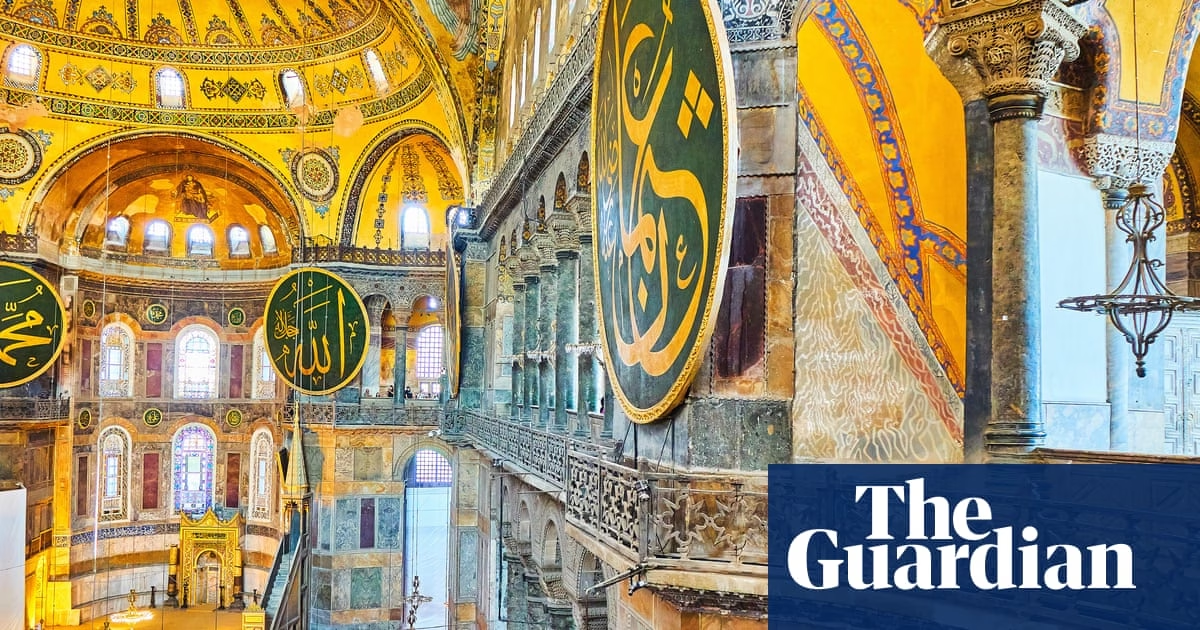Standing beneath the stone archways, grand murals, and filagree lamps of the Hagia Sophia, architect Hasan Fırat Diker reflects on his vocation: the protection of a fragile structure that is both Turkey’s grandest mosque and perhaps its most contentious building. He is overseeing some of the most intense restoration and preservation works in the Hagia Sophia’s nearly 1,500-year history, including efforts to strengthen its grand central dome and protect it from earthquakes. “We are not just responsible for this building but to the entire world public,” Diker said, gesturing at the crowds of visitors kneeled on the plush turquoise carpets or gazing at the murals of feathered seraphim. He pointed up at the gold mosaic and blue mural interior of the main dome, what he describes as one of the many “unsolved problems” of the Hagia Sophia’s design. The imposing structure, first built in AD537 under the Byzantine empire, is visibly uneven in places, in particular the grand dome, which for hundreds of years has sat perched atop four columns of different dimensions. The entire building is a patchwork of repairs after the collapse of the original dome in an earthquake in 558 plus several of the surrounding half-domes in later tremors. The Hagia Sophia still bears features from when it was one of the world’s grandest cathedrals before its conversion into a mosque after the Ottoman conquest in 1453 of what was then Constantinople
Transformed into a museum under the Turkish republic in 1935, a Turkish court controversially reclassified it as a mosque five years ago. The decision sparked fierce criticism, including from Unesco, which called the Hagia Sophia “an architectural masterpiece” and said the decision to reclassify it undermined “the universal nature of its heritage”. Diker’s role, alongside other architects, engineers, and art historians appointed by the Turkish authorities, will be to conduct the most extensive restoration works in years. The team will remove the lead covering the main dome and look for ways to strengthen the fragile joints between the semi-domes and the main cupola in order to prevent earthquake damage. They will also examine the four supporting pillars and parts of the structure below ground. “This may be one of the greatest restorations of the current period in Turkey,” Diker said. Their mission only proved more pressing when last month a 6.2-magnitude earthquake struck off the coast of Istanbul, causing buildings across the city to tremble. Diker immediately rushed from his office to peer at the mosque’s interior and inspect for damage. Scaffolding soon to cover the interior is intended to allow for business to continue as usual This may be one of the greatest restorations of the current period in Turkey.at the Hagia Sophia
Source: https://www.theguardian.com/world/2025/may/14/hagia-sophia-restoration-works-istanbul-earthquakes







